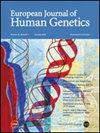Biallelic variants in RYR1 and STAC3 are predominant causes of King-Denborough Syndrome in an African cohort
IF 3.7
2区 生物学
Q2 BIOCHEMISTRY & MOLECULAR BIOLOGY
引用次数: 0
Abstract
King-Denborough Syndrome (KDS) is a congenital myopathy (CM) characterised by myopathy, dysmorphic features and susceptibility to malignant hyperthermia. The objective of this study was to investigate the genotype-phenotype correlation in Black African patients presenting with CM, specifically those with KDS-like phenotypes, who remained undiagnosed for over 25 years. A cohort of 67 Black African patients with CM was studied, of whom 44 were clinically evaluated and diagnosed with KDS. Whole-exome sequencing (WES) was performed as part of an international genomics study (ICGNMD) to identify potential pathogenic mutations. Genomic assessments focused on identifying relevant genes, including RYR1 and STAC3, and establishing genotype-phenotype correlations. The study identified RYR1 and STAC3 mutations as the predominant genetic causes of KDS in this cohort, with mutations in both genes exhibiting autosomal recessive inheritance. While RYR1 has previously been linked to autosomal dominant mutations, STAC3, which was formerly associated exclusively with Native American Myopathy/Bailey-Bloch Myopathy, congenital hypotonia, and susceptibility to malignant hyperthermia, is now newly associated with CM-KDS in this study. This establishes the first genotype-phenotype correlation for 44 Black African individuals with KDS. This study marks a significant milestone in research on understudied African populations with CM, emphasising the lengthy diagnostic journey these patients endured. The findings highlight the pressing need for improved access to genomic medicine in underserved regions and underscore the importance of expanding research and diagnostic capabilities in Africa. This work contributes to the advancement of genetic medicine in underrepresented populations, facilitating better diagnostic and therapeutic outcomes.

在一个非洲队列中,RYR1和STAC3的双等位基因变异是导致King-Denborough综合征的主要原因。
金-登伯勒综合征(KDS)是一种先天性肌病(CM),其特征是肌病、畸形特征和对恶性高热的易感性。本研究的目的是调查黑人CM患者的基因型-表型相关性,特别是那些具有kds样表型的患者,这些患者未被诊断超过25年。研究了67例黑人CM患者,其中44例经临床评估并诊断为KDS。全外显子组测序(WES)作为国际基因组学研究(ICGNMD)的一部分进行,以确定潜在的致病突变。基因组评估侧重于鉴定相关基因,包括RYR1和STAC3,并建立基因型-表型相关性。该研究确定RYR1和STAC3突变是该队列中KDS的主要遗传原因,这两个基因的突变均表现为常染色体隐性遗传。虽然RYR1先前与常染色体显性突变有关,但STAC3,以前仅与美洲原住民肌病/贝利-布洛赫肌病,先天性肌紧度低和恶性高热易感性相关,现在在本研究中与CM-KDS相关。这为44名患有KDS的黑非洲人建立了第一个基因型-表型相关性。这项研究标志着对未被充分研究的非洲CM人群研究的一个重要里程碑,强调了这些患者忍受的漫长诊断过程。这些发现强调了在服务不足的地区改善获得基因组医学的迫切需要,并强调了在非洲扩大研究和诊断能力的重要性。这项工作有助于在代表性不足的人群中推进遗传医学,促进更好的诊断和治疗结果。
本文章由计算机程序翻译,如有差异,请以英文原文为准。
求助全文
约1分钟内获得全文
求助全文
来源期刊

European Journal of Human Genetics
生物-生化与分子生物学
CiteScore
9.90
自引率
5.80%
发文量
216
审稿时长
2 months
期刊介绍:
The European Journal of Human Genetics is the official journal of the European Society of Human Genetics, publishing high-quality, original research papers, short reports and reviews in the rapidly expanding field of human genetics and genomics. It covers molecular, clinical and cytogenetics, interfacing between advanced biomedical research and the clinician, and bridging the great diversity of facilities, resources and viewpoints in the genetics community.
Key areas include:
-Monogenic and multifactorial disorders
-Development and malformation
-Hereditary cancer
-Medical Genomics
-Gene mapping and functional studies
-Genotype-phenotype correlations
-Genetic variation and genome diversity
-Statistical and computational genetics
-Bioinformatics
-Advances in diagnostics
-Therapy and prevention
-Animal models
-Genetic services
-Community genetics
 求助内容:
求助内容: 应助结果提醒方式:
应助结果提醒方式:


